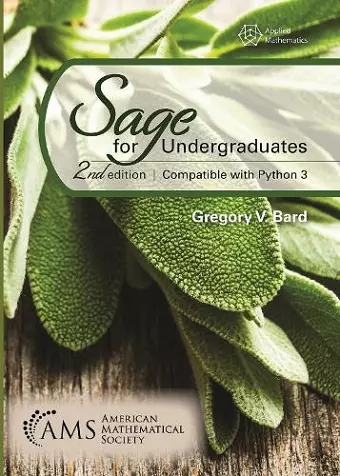Sage for Undergraduates
Second Edition, Compatible with Python 3
Format:Paperback
Publisher:American Mathematical Society
Published:30th Nov '22
Should be back in stock very soon

As the open-source and free alternative to expensive software like MapleTM, MathematicaR, and MATLABR, Sage offers anyone with a web browser the ability to use cutting-edge mathematical software and share the results with others, often with stunning graphics. This book is a gentle introduction to Sage for undergraduate students during Calculus II, Multivariate Calculus, Differential Equations, Linear Algebra, Math Modeling, or Operations Research.
This book assumes no background in programming, but the reader who finishes the book will have learned about 60 percent of a first semester computer science course, including much of the Python programming language. The audience is not only math majors, but also physics, engineering, environmental science, finance, chemistry, economics, data science, and computer science majors. Many of the book's examples are drawn from those fields. Filled with ""challenges"" for the students to test their progress, the book is also ideal for self-study.
What's New in the Second Edition:
In 2019, Sage transitioned from Python 2 to Python 3, which changed the syntax in several significant ways, including for the print command. All the examples in this book have been rewritten to be compatible with Python 3. Moreover, every code block longer than four lines has been placed in an archive on the book's website http://www.sage-for-undergraduates.org that is maintained by the author, so that the students won't have to retype the code! Other additions include:
- The number of ""challenges"" for the students to test their own progress in learning Sage has roughly doubled, which will be a great boon for self-study.
- There's approximately 150 pages of new content, including: New projects on Leontief Input-Output Analysis and on Environmental ScienceNew sections about Complex Numbers and Complex Analysis, on SageTex, and on solving problems via Monte-Carlo Simulations. The first three sections of Chapter 1 have been completely rewritten to give absolute beginners a smoother transition into Sage.
From the previous edition:
"Professor Bard has provided a valuable service by carefully explaining everything an undergraduate student of mathematics, or a teacher of these topics, needs to get started with Sage quickly and easily. It will also be useful for any student or teacher of another STEM discipline. There is an excellent mix of the most frequently used commands, along with warnings about common pitfalls or caveats. I highly recommend it for anyone new to Sage, or who desires an overview of the system's impressive capabilities."—Robert A. Beezer, University of Puget Sound
"This book is a sort of ""Missing Manual"" that explains how Sage can be used in a range of standard mathematics courses, instead of targeting specialists like much existing Sage documentation. The depth of content is very impressive, and describes--in a single coherent narrative--how to successfully use Sage for a wide swath of undergraduate applied topics."—William Stein, University of Washington, Seattle
ISBN: 9781470461553
Dimensions: unknown
Weight: 363g
481 pages